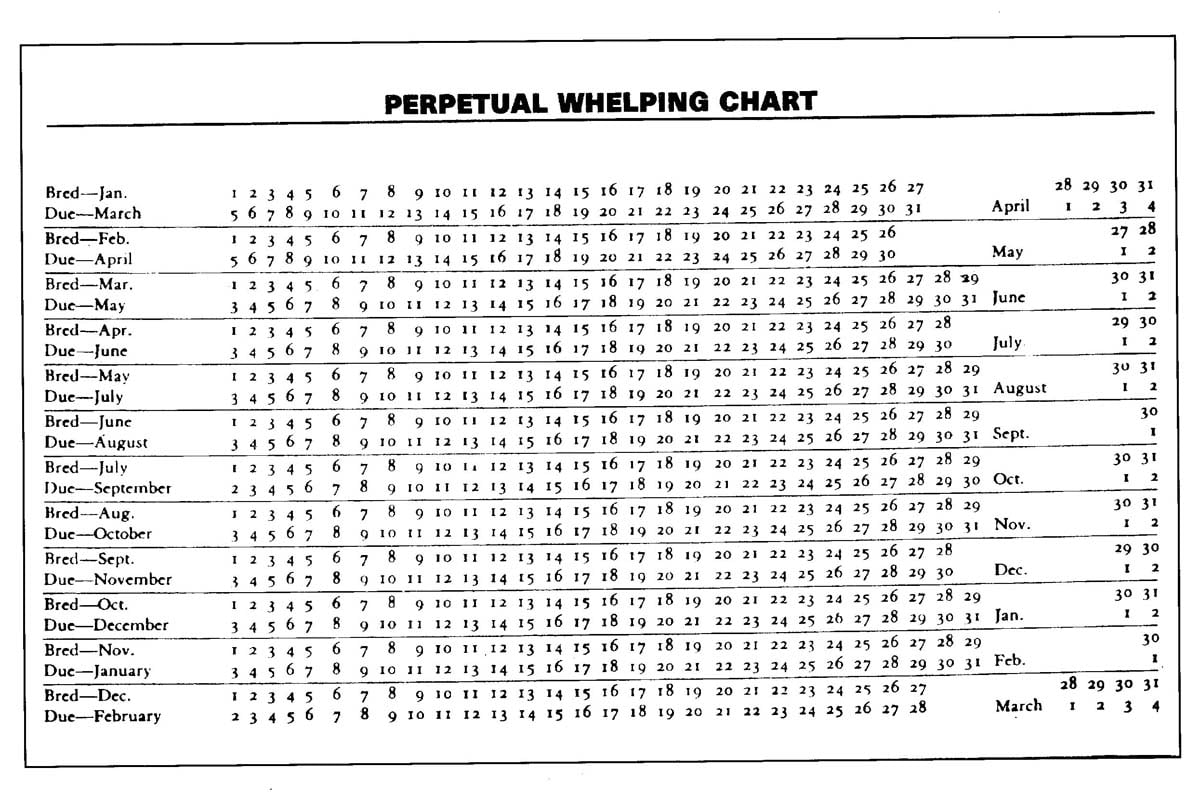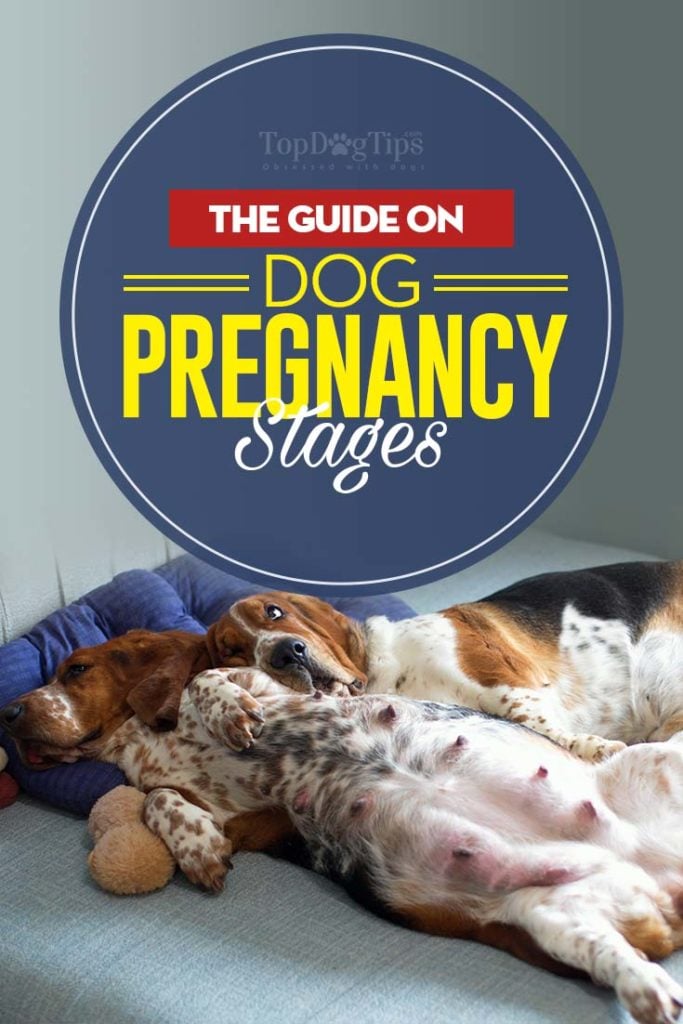Your dog's pregnancy can be an exciting time for both of you, but it can also be a stressful time. Knowing all the dog pregnancy stages and how long are dogs pregnant will help you prepare for this better. There are clear signs of dog pregnancy, and things you should do.
Table of Contents
Detecting Pregnancy in Your Dog
Your dog may have recently been in heat or have been bred with another dog, and you're counting down the days of dog pregnancy stages and looking for any sign that she became pregnant.
Many female dogs will show some basic signs of pregnancy, such as an increase in their appetite, swollen nipples, and weight gain. You'll also see an increase in your dog's abdomen size and shape. You can also feel to see if you can detect any movement of puppies after a certain stage.
There is no accurate dog pregnancy test for home use but there are a variety of veterinary testing methods such as blood tests, ultrasounds and x-rays. Your vet can help determine a positive pregnancy in your dog and even suggest an approximate due date.
Dog Pregnancy Stages
How Long are Dogs Pregnant?
When you're positive that your dog is pregnant, familiarize yourself with dog pregnancy stages and how to care for a pregnant dog.
The most common question I get from pet owners is, how long are dogs pregnant? The answer may surprise you, as a dog’s gestation period is not quite as long as humans.
A dog’s gestation period is 58 to 67 days, or 63 days on average.
While 63 days is the average, a few things that can come into factor and make for a difference in time range are litter size, breed, and the family line average.
Puppy litter size makes a difference because a dog that is having fewer puppies can deliver later than a dog that is having a large litter. Fewer puppies puts less strain on the uterus and it's less crowded as they begin to reach maturity.
Breed size can also make a difference in that small breed female dogs tend to have a longer gestational period than their larger counterparts.
It's also known that how long a dog is pregnant can be related to the dog's family line. Reputable breeders will often keep birth records for each litter of pups that are born in a line, and can tell you the average number of days for your dog’s mother and grandmother. You can also use many popular dog DNA tests to find out more about their lineage.
While it's exciting to think of how soon your dog’s new puppies will arrive, it's important that they are not delivered too early. Your veterinarian will tell you to watch your dog closely for signs of labor and be aware of all the basic stages of dog pregnancy.
Puppies that are born before day 58 (Roper, Lifestyle, n.d.) generally do not survive because their lungs are not yet mature. Preemies, which may or may not yet survive, can be recognized by very bright pink paws with little to no fur on them.
Prenatal Care for Dogs
Prenatal care is extremely important for your pooch to ensure a healthy dog pregnancy and healthy puppies. There are steps you can take prior to your dog getting pregnant.
Double check that all of your pregnant dog’s vaccinations are up to date. Be sure to have her wormed before the pregnancy. Otherwise, you will have to wait until after the puppies are born, which opens up the risk for potential health problems.
You should also check both your dog and her new mate for canine STD’s, especially for canine brucellosis which can infect the reproductive organs and cause late term miscarriage and lifelong sterilization for both infected animals.
Another type of dog STD is canine transmissible venereal tumor (CTVT) which has been giving dogs cancer for over 11,000 years.
Once your pregnant dog's vaccines and health checks are done, your veterinarian will go over the importance of nutrition and care for all different dog pregnancy stages. It is usually suggested that you provide a premium dog food and allow your pet to eat an increased amount of calories during her pregnancy.
Premium dog foods that are more nutritionally rich and contain higher quality ingredients will give your pregnant dog all that extra nutrition she needs to support the litter, but be sure to encourage her to continue to exercise by taking several short walks a day. A healthy dog with toned muscles will have an easier time delivering her puppies when the time comes than an overweight or obese unhealthy canine.
Some of the best dog foods for pregnant dogs are:
Dog Pregnancy Stages and Whelping Chart
The stages of pregnancy are relatively short for dogs in comparison to humans. With 63 days being considered the average term pregnancy, dog pregnancy stages can be broken down into three 21-day periods.
Here's a perpetual dog whelping chart you can refer to:

In the beginning, there may not be any symptoms but soon you will begin to notice certain active signs of your dog being pregnant. The dog pregnancy stages can give you an idea of what changes to watch for in your dog and how the pregnancy will progress.
Stage 1
Days 0-25
During the first few weeks of your dog's pregnancy the embryos are just beginning to take shape. They are starting to embed into the uterine lining.
Your dog may begin to show pregnancy symptoms such as:
- Enlarged nipples.
- Increased appetite.
- Decreased activity.
- Affectionate behavior.
Stage 2
Days 25-45
At the beginning of this second dog pregnancy stage your veterinarian should be able to detect heartbeats with an ultrasound. Puppies will develop quickly during this stage.
The signs of pregnancy will be very noticeable during this stage of your dog’s pregnancy, and you may notice the following:
- Increased Appetite.
- Noticeable weight gain.
- Behavior changes.
- Increased urination.
Stage 3
Days 45-65
As your dog begins this third dog pregnancy stage you may notice a decrease in appetite. Your pregnant dog may also start to show signs of nesting behaviors, and looking for a place to have her puppies.
You should already have prepared a whelping box and other pregnancy supplies as outlined here for her to have her pups and be getting her used to the area.
Signs to watch for during the last few days are:
- Restless behavior.
- Appetite loss.
- Waist will slim as puppies move into the birthing canal.
- Pacing, digging.
- Panting, heavy breathing, or shivering.
Preparations for Birth and Puppy Delivery
In preparing for your dog’s birthing process you will help your dog’s delivery be as comfortable as possible. Many veterinarians suggest the use of a whelping box or dog crate pads.
A whelping box or crate pads are ideal. This provides a safe, warm, and comfortable place for your dog to deliver in and it's easily cleaned up.
Set up the whelping box in a quiet area away from other animals in your home, and introduce your dog to the area. You may also want to assemble some supplies for when your dog goes into labor like:
- Dental floss.
- Heating pad.
- Baby scale.
- Your veterinarian’s emergency phone numbers.
It’s important to keep these dog pregnancy supplies together and within easy reach. When it comes time for your dog to deliver puppies, you don’t know what could happen. She may be able to handle everything on her own, but she may not. You may have to step in, and help deliver the puppies yourself.
Here are some of the best dog whelping mat choices we've liked in the past:
| Preview | Product | Rating | |
|---|---|---|---|

|
EZwhelp Reusable Dog Pee Pads - Waterproof... | 9,964 Reviews | Check Price |

|
Drymate Whelping Box Liner Mat, Washable and... | 3,303 Reviews | Check Price |

|
Pet Parents Washable Round Whelping Pads (2pack)... | 15,243 Reviews | Check Price |
Dog Labor and Delivery
Always keep in mind the dates, times and all dog pregnancy stages because you will need to be prepared and watch your dog for labor signs. Your dog may stop eating a day or two before whelping. She may also begin nesting by bringing things to her whelping box.
You can gently help your dog by lining her whelping box with easy to clean soft newspaper, an old blanket, and perhaps a favorite toy. Creating a familiar and quiet environment that is hers alone will help alleviate some of the anxiety your dog may have giving birth.
You can take your dog’s temperature to help determine if your dog is definitely in labor. If your dog is beginning to pant heavily and you suspect she is in labor check if her temperature has dropped below 99 F degrees; a dog’s normal temperature is 100 to 102.5 degrees Fahrenheit (Burke, 2016).
Make your dog comfortable in her whelping box. She may go there on her own. Most dogs do not need any human intervention when giving birth to their puppies.
Keep your veterinarian’s phone number handy in case of emergency, as things can go wrong and require medical intervention. Anytime you become overwhelmed you should call your veterinarian who can walk you through what you need to do.
As each puppy is born, your dog will eat and lick at the membrane surrounding it. This is normal. If she has difficulty getting it off the puppy you may have to give her a hand before its oxygen supply runs out.
The dog pregnancy supplies you had gathered beforehand will help you handle all the steps for delivering the puppies. You will notice that your dog bites off the umbilical cord of each pup as she cleans it.
This is a good time to gently take each pup and trim the umbilical cord with a pair of scissors. You can then tie it off with the unwaxed dental floss that you had prepared for the whelping box.
Use iodine to wipe off each puppy’s abdomen around the umbilical cord to help prevent infection. As your dog continues to deliver puppies, be sure to keep track of the number of placentas as well.
Once all the puppies are born, stay with your dog and her new puppies until you are sure that they are doing well. Now both you and your dog will need some rest as these young puppies will grow up fast.
READ NEXT: This Year's 25 Best Puppy Food Brands
Disclosure: We may earn affiliate commissions at no cost to you from the links on this page. This did not affect our assessment of products. Read more here and find full disclosure here.















